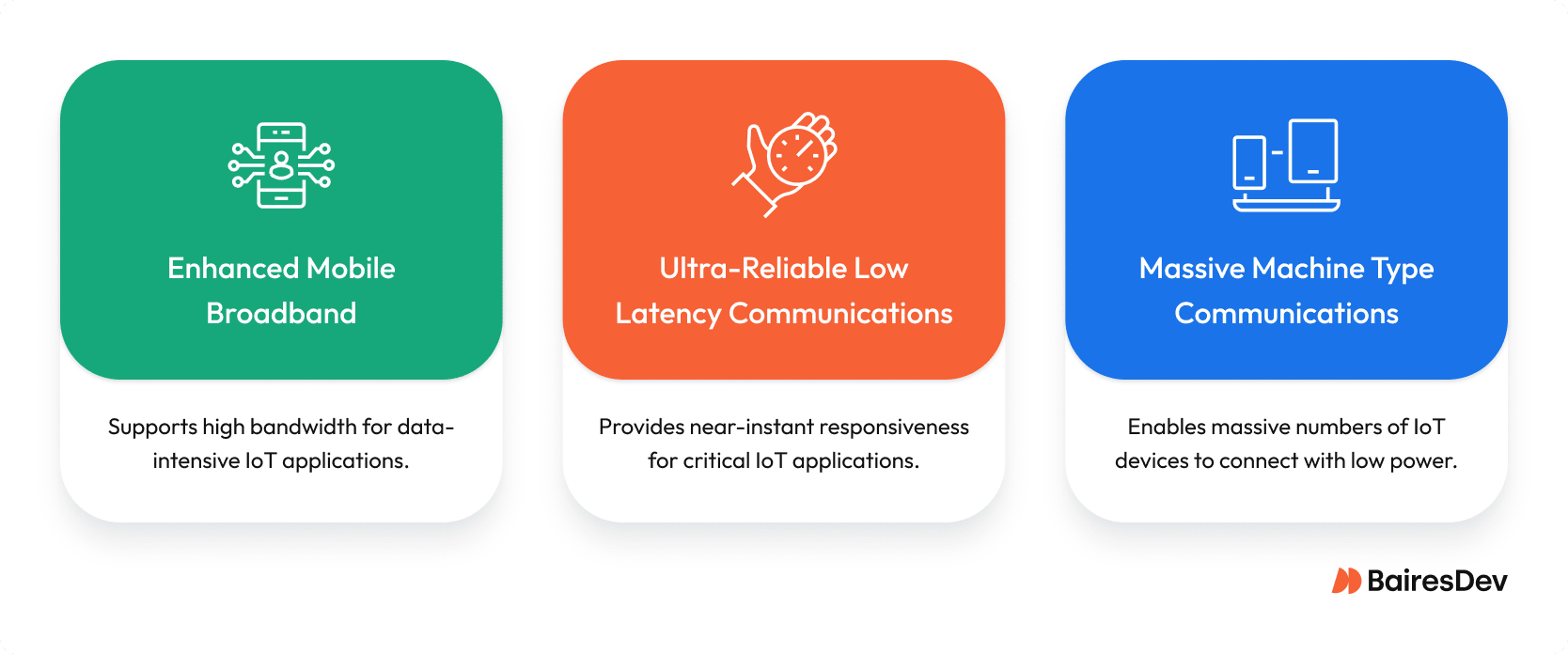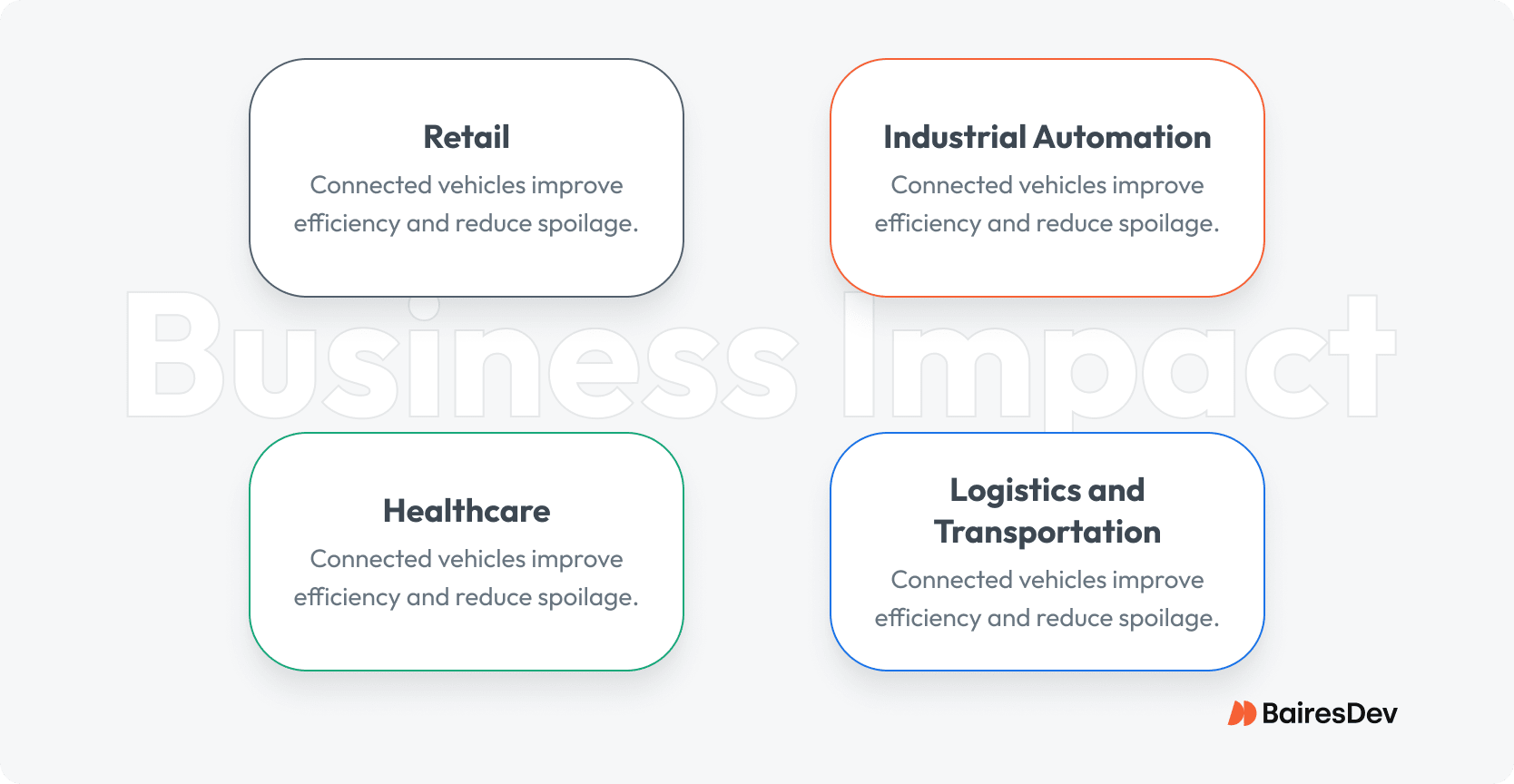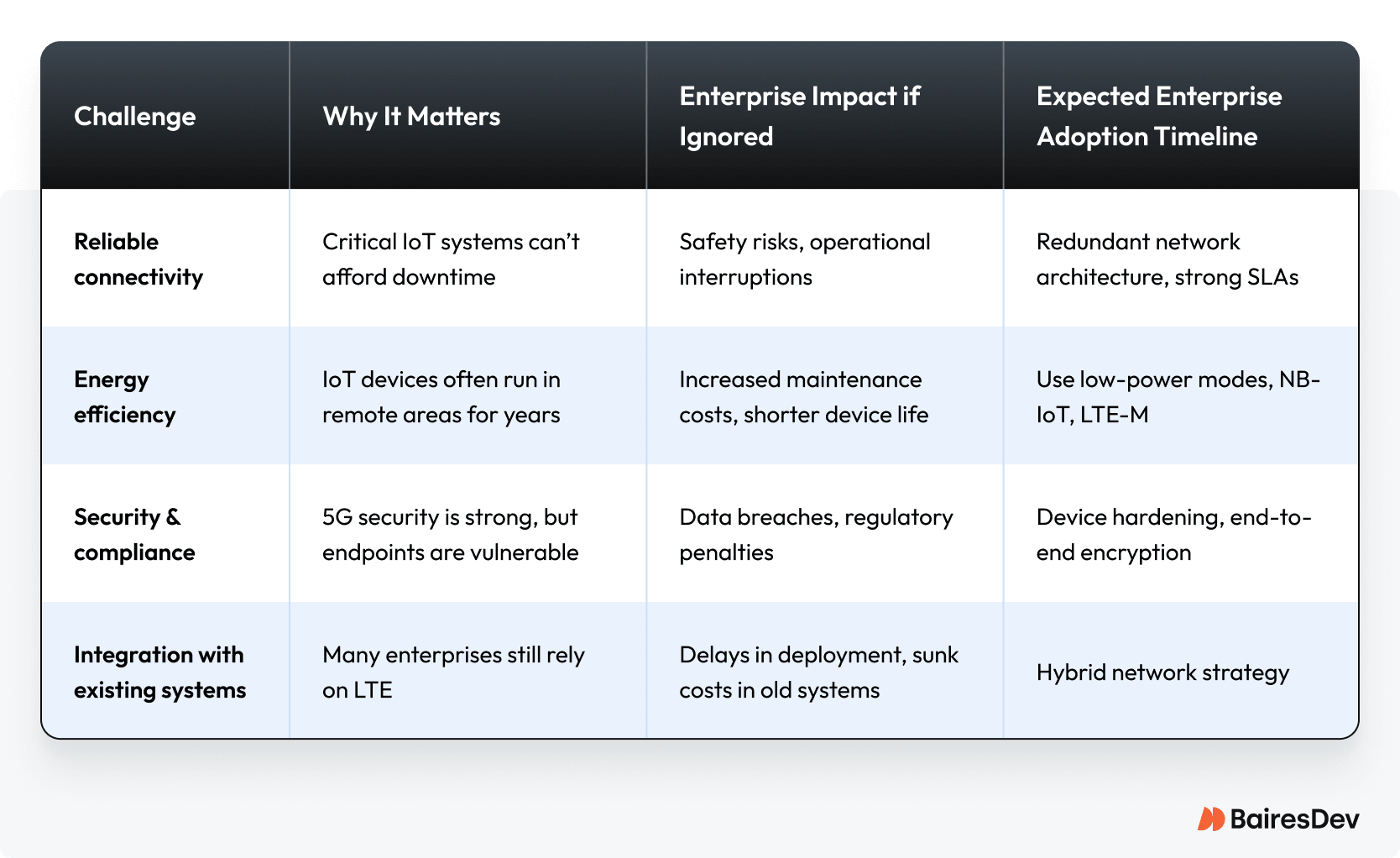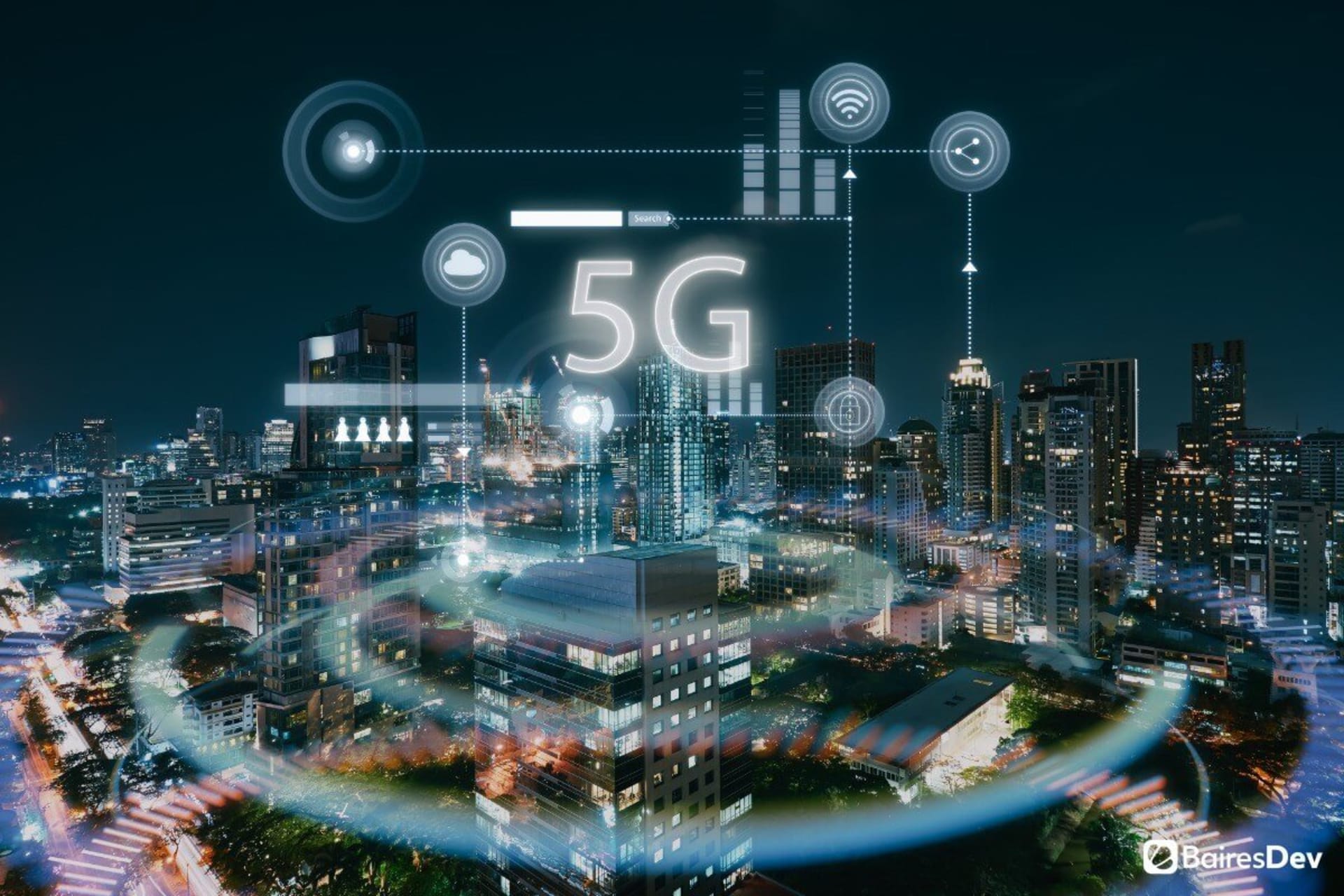The Internet of Things (IoT) has grown into a vast ecosystem of connected devices—everything from small, low power sensors to fleets of autonomous vehicles. Each of these devices collects and transmits data, often in real time, to power business processes, enable automation, and create entirely new services.
According to a 2023 Research and Markets report, the 5G IoT market grew from $4.45 billion in 2022 to $7.36 billion in 2023, with projections up to $57.1 billion by 2027. This growth has stretched older cellular networks to their limits. Reliable connectivity has become a strategic necessity, yet legacy mobile networks weren’t designed for the scale or reliability the modern IoT landscape demands.
The fifth generation of cellular technology changes the equation. Developed under the oversight of the Third Generation Partnership Project (3GPP), the 5G network introduces capabilities that directly address the challenges of large-scale IoT deployments:

- Enhanced Mobile Broadband (eMBB): Offers increased bandwidth for data-intensive IoT applications such as video streaming, immersive VR and AR, and other high-bandwidth applications requiring more data.
- Ultra-Reliable Low Latency Communications (URLLC): Provides near-instant responsiveness for critical IoT applications, with latency as low as one millisecond. This is essential for real-time industrial control systems, autonomous vehicles, and other applications where lag-free, precise control is mandatory.
- Massive Machine Type Communications (mMTC): Enables massive numbers of low-power IoT on the network, extending battery life and supporting scalable IoT deployments across industries.
The result is a network designed not just for faster downloads, but for a fundamentally different class of connected systems, capable of supporting critical IoT applications, enabling new business models, and giving engineering leaders the performance headroom they need to plan for the next decade.
Why This Matters for Enterprise Leaders
For CTOs and VPs of Engineering, 5G IoT is more than an incremental infrastructure refresh. It’s a catalyst for digital transformation and new business models. The ability to combine high-speed connectivity, low latency, and reliable services allows enterprises to:
- Close resource gaps when skilled labor or local infrastructure is limited.
- Accelerate product roadmaps by enabling faster prototyping, real-time feedback, and global scalability.
- Create revenue streams through IoT services and data monetization.
Examples across sectors highlight the business impact:

- Industrial automation: A U.S. automotive manufacturer deployed industrial IoT sensors across 14 plants. With private network integration, downtime dropped by 18% and predictive maintenance reduced repair costs by 12% in the first year.
- Logistics and transportation: A shipping company integrated connected vehicles and freight container sensors into its core network. The result: 23% faster rerouting decisions, improved fuel efficiency, and reduced spoilage for temperature-sensitive goods.
- Healthcare: Wearable medical devices connected via a fifth generation private network allow remote patient monitoring with real-time alerts. In trials, clinicians intervened in high-risk cases up to 40 minutes faster compared systems using LTE technology.
- Retail: A large retail chain rolled out affordable devices and wireless networks for smart shelving and inventory tracking. The shift reduced out-of-stock incidents by 9% and enabled more precise demand forecasting.
The Architecture Behind 5G IoT
Unlike past mobile technology upgrades, 5G is built on a fundamentally new network architecture. At its core are two main components:
- Radio Access Network (RAN): Connects IoT devices to the mobile network through cell towers and small cells, using licensed and unlicensed spectrum for flexibility.
- Core network: Handles authentication, data routing, and integration with cloud computing resources and other network infrastructure.
Enterprise adoption often focuses on two transformative concepts:
- Network slicing: A single 5G network can be divided into multiple virtual networks, or “slices,” each configured with its own technical capabilities. ResearchAndMarkets reports the network slicing market growing by $1.62 billion from 2023–2028, with a strong CAGR ~37%. A manufacturer might dedicate one slice for low latency automation, another for high bandwidth applications like HD video streaming, and a third for IoT services that prioritize energy efficiency.
- Edge computing: Moving processing closer to the network edge where IoT data is generated, edge computing has become a cornerstone for latency-sensitive applications and real-time analytics. According to the 2025 Gartner CIO and Technology Executive Survey, 27% of manufacturing enterprises have already deployed edge computing, and 64% plan to have it deployed by the end of 2027.
Business and Technical Challenges
While the potential of 5G IoT is huge, it comes with operational realities that can derail deployments if overlooked. For enterprise leaders, understanding not just the technical issues but also their business consequences is critical. The matrix below outlines four common challenges, why they matter, the risks of inaction, and proven approaches to address them.

By framing challenges in terms of business impact, leaders can prioritize investments and partnerships that reduce risk without slowing innovation. This approach turns potential roadblocks into opportunities to strengthen their overall 5G IoT strategy.
Strategic Considerations for Decision-Makers
Rolling out 5G IoT in an enterprise setting is rarely as simple as flipping a switch. The companies that get the most out of it tend to approach the process in ways that reflect their industry realities rather than following a generic checklist. A few examples:
- Network slicing isn’t one-size-fits-all. Some teams jump to carve up the network right away; others wait until a few pilots show which workloads actually need guaranteed latency or bandwidth. Both approaches can work—the key is knowing your traffic patterns.
- Edge computing needs a business case, not just a technical spec. It’s tempting to push processing to the edge because it sounds modern, but the real payoff comes when it solves a specific problem—think automated quality checks on a production line, or vehicle telemetry that can’t afford round trips to the cloud.
- Capacity planning pays off sooner than you think. Even if your IoT deployment starts small, infrastructure that can handle large-scale machine-type communications spares you a painful (and expensive) rebuild later.
- Choose network partners like you’d choose a co-founder. Beyond speed and coverage, look at their track record for uptime, incident response, and compliance in your sector. You’ll lean on them more than you expect.
- Tie connectivity to bigger wins. Projects framed only as “tech upgrades” often struggle for budget. Link them to revenue growth, cost avoidance, or customer experience gains, and they get traction—and keep it.
The move from older cellular networks to the fifth generation infrastructure isn’t just about more bandwidth. It’s about building a foundation for wireless technology that supports long-term growth, innovation, and operational resilience.
Frequently Asked Questions
What’s the difference between 5G and IoT?
5G is the wireless technology—the mobile network providing high speed connectivity, low latency, and high bandwidth for massive numbers of connected devices. The Internet of Things is the ecosystem of physical connected devices that depends on this network.
How does 5G enable new business models?
5G’s low latency, high bandwidth, and massive machine type communications make it possible to launch services like real-time remote monitoring, private network solutions for industrial automation, and subscription-based IoT services. These capabilities support both entirely new business models and optimizations of existing business processes.
What is the role of edge computing in 5G and IoT?
Edge computing processes IoT data near the network edge, closer to where it’s generated. This reduces latency, conserves bandwidth, and allows faster decisions for critical IoT applications such as connected vehicles, industrial automation, and remote surgery.
How does 5G improve IoT security?
5G includes more advanced encryption, authentication, and isolation features than earlier cellular networks. These improvements strengthen IoT connectivity, but security still depends on device-level protections and ongoing monitoring.
What is network slicing?
Network slicing allows network operators to split a physical 5G network into multiple virtual networks, each with customized performance attributes. Enterprises can dedicate slices for specific IoT applications, such as low latency for control systems or high bandwidth for video streaming.
How does 5G improve energy efficiency for IoT devices?
5G supports low power modes and IoT technologies like NB-IoT that allow devices to operate for years on small batteries. This makes large-scale IoT deployments more sustainable and cost-effective.
What is the difference between NB-IoT and 5G IoT?
NB-IoT is a narrowband IoT connectivity standard within the LTE technology family, designed for low bandwidth, low power use cases. 5G IoT is a broader category covering all IoT applications running on the fifth generation network, from NB-IoT style devices to high bandwidth, low latency systems.
How will 5G enable new VR and AR experiences?
5G’s high bandwidth and low latency capabilities allow for seamless high definition video streaming and responsive virtual and augmented reality interactions. This unlocks IoT applications in training, design, entertainment, and industrial simulation without motion lag or image degradation.







